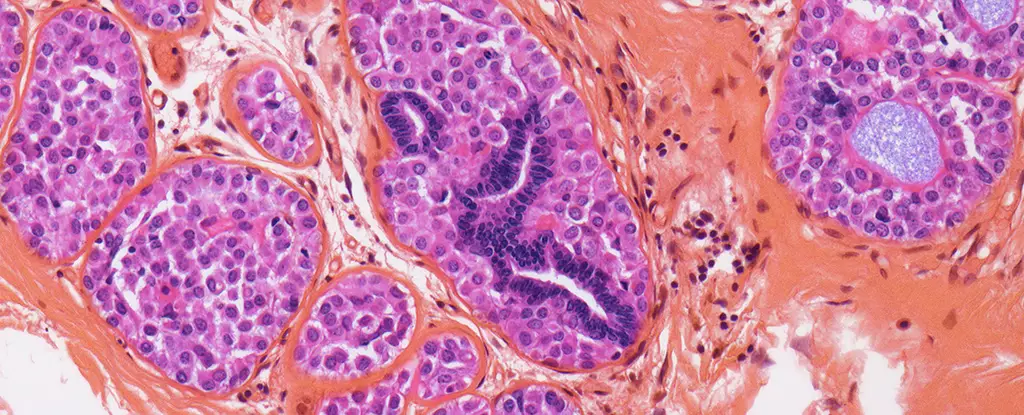Breast cancer continues to be one of the most daunting challenges in oncology, claiming hundreds of thousands of lives annually despite significant advances in treatment. A troubling reality persists: nearly 30% of patients who initially respond successfully to therapy will face a relapse, often years after the apparent remission. These recurring tumors are fueled by a stealthy adversary—dormant tumor cells (DTCs). These cells conceal themselves in the body’s microenvironments, particularly in the bone marrow, lying in wait for the right conditions to reawaken and fuel new growth.
It’s a cruel twist: patients can go into remission only to be blindsided years later by recurrence, a process difficult to predict and even harder to prevent. Traditionally, the approach has been passive—close monitoring and saving the treatment for when the tumor reappears. But this reactive strategy fails to address the fundamental issue: how do we effectively eliminate these insidious sleeper cells before they can reignite the deadly cycle?
The latest research from the University of Pennsylvania offers a promising paradigm shift. Instead of waiting for cancer to strike again, scientists are exploring methods to proactively eradicate these dormant cells, attacking the roots of recurrence at their source. This innovative approach could transform survivorship from a period shadowed by fear to one characterized by sustained remission and genuine freedom from cancer.
Emerging Strategies: Targeting the Biological Quicksand of Dormancy
Recent breakthroughs have identified DTCs as not just bystanders but as active entities that require distinct approaches to treatment. Unlike rapidly dividing active tumor cells, dormant cells are metabolically and biologically different, residing quietly, often resisting conventional therapies designed to target fast-growing cells. Recognizing this, researchers are pushing the boundaries of oncology to develop drugs that specifically target the unique biology of these sleeping cancer cells.
One of the most compelling developments is the utilization of existing drugs such as hydroxychloroquine and everolimus—agents already approved for other indications—re-purposed to combat DTCs. The study involving 51 breast cancer survivors revealed remarkable results: a combination of these drugs eradicated up to 87% of dormant cells, and importantly, individuals remained cancer-free for at least three years post-treatment. These findings aren’t just a statistical victory; they suggest that with appropriate targeting, complete remission may become a realistic goal rather than an elusive hope.
Moreover, the research shows that drugs ineffective against active tumor cells can be highly effective against dormant cells. This discovery challenges conventional wisdom and opens new avenues for drug development. It underscores the importance of understanding the underlying biology—particularly, the pathways that govern cell dormancy—and tailoring treatments to exploit these vulnerabilities.
The Future of Cancer Prevention: Moving from Reactive to Proactive Treatment
While these findings are promising, they mark only the beginning of a new era in breast cancer management. The next critical step involves expanding clinical trials, testing more extensive patient cohorts, and exploring diverse drug combinations to optimize efficacy and safety. The goal is to develop regimens that can be administered on a broad scale, changing the prognosis for millions of women worldwide.
One of the most exciting prospects is the potential to shift from a model of surveillance to one of eradication. Instead of waiting passively for recurrence, we can now envisage a future where treatment proactively targets and destroys DTCs, substantially reducing relapse rates. This approach could, theoretically, transform breast cancer into a manageable, even curable, condition—if not outright elimination—rather than a persistent threat lurking within the body.
Of course, challenges remain. Not every patient will harbor these dormant cells, and identifying those who do will require sophisticated diagnostics. Furthermore, the long-term effects of these drug combinations need careful evaluation, especially considering that many potential treatments involve repurposing existing drugs. They may present unforeseen risks, or their efficacy might vary based on individual biology.
Yet, despite these hurdles, the potential impact is profound. For countless survivors haunted by the fear of recurrence, this research offers a glimmer of hope—an actual strategy to end the cycle of relapse and redefine what it means to beat breast cancer.
—
This innovative focus on dormant tumor cells underscores a profound shift in oncology, emphasizing prevention over reaction. It challenges the conventional paradigm and could set the stage for more personalized, effective cancer treatments that fundamentally alter patient outcomes. While skepticism about early-stage results is healthy, the inexorable progress in understanding cancer biology suggests that targeting dormancy might become the cornerstone of future breast cancer therapy.

